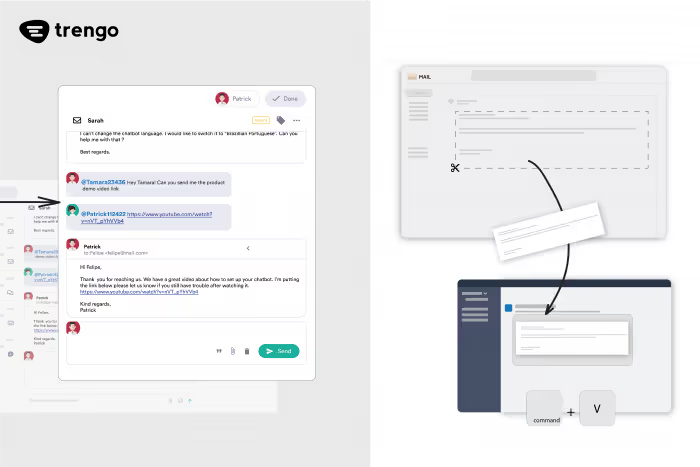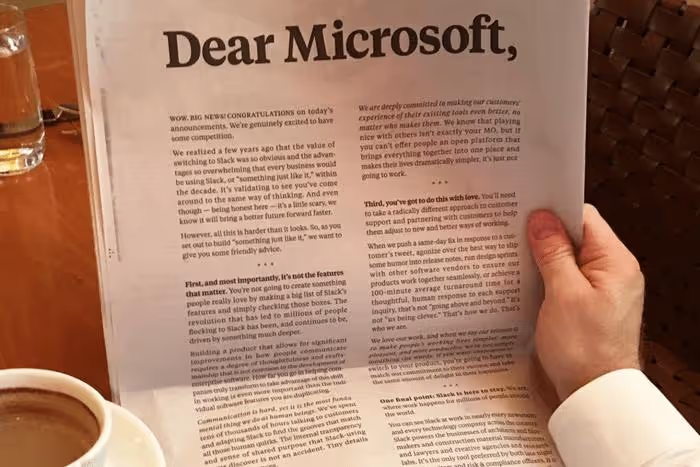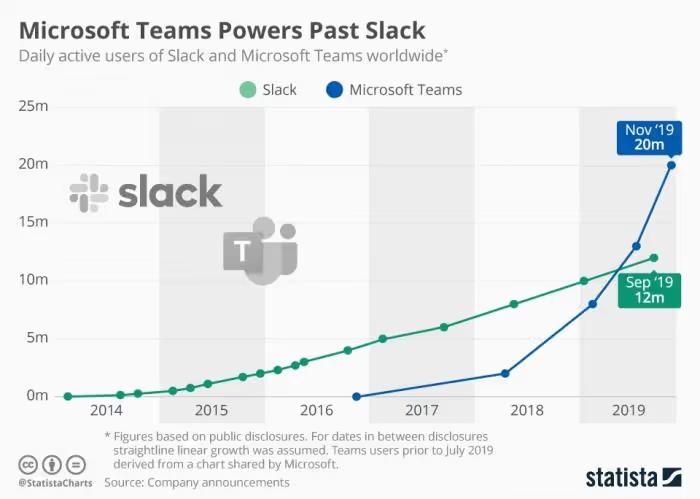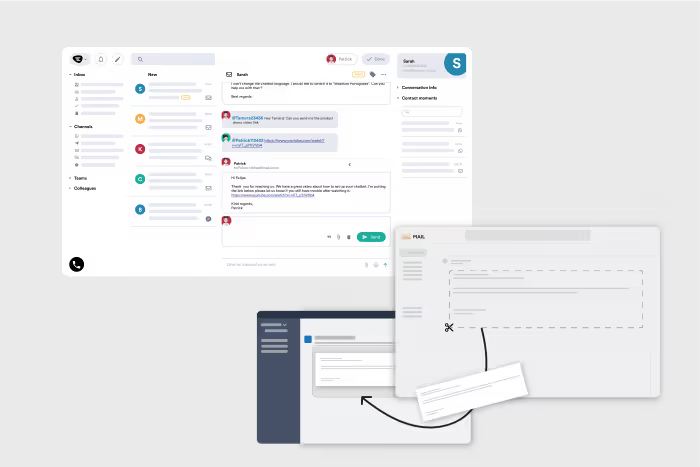Let's start with a question. How many of you are still sending internal emails today? And with internal emails I mean, using Gmail and Outlook to email your colleagues? Probably the answer is "not me". Although sending internal emails is still happening a lot, but that is a discussion for later.
Let's assume everyone in this world completely banished internal emails. We just heard it on the news "internal emails are officially dead" and all your internal communication is done via - let's drop the names - either Slack or Microsoft teams (or that product by Google).
For a lot of people, this would sound like heaven. That one colleague, always sending internal emails to everyone? Gone. Not the colleague, but the internal emails.
What if I told you everyone is doing internal emails wrong? Would you believe me?
Nah...
Read on to discover how we are replacing internal email, the right way (and started working way more efficiently).

Slack's game to replace internal email
Did you know Slack pivoted from a gaming app?
Steward Butterfield (Slack's founder) was on a mission to create a gaming app named Glitch, with his company Tiny Speck. In 2012 the company announced that Glitch had not attracted a big-enough audience to sustain itself. Meanwhile, an internal communication tool developed to connect their different offices had proved itself invaluable.
And in 2013, Slack was officially born.
The company set its mission to replace internal emails and landed most of the fortune 500 companies as a customer. Today Slack has more than 12 million active users and is valued over 16 billion USD. Making it the fastest growing startup ever.
But then, someone else joined the game.
In 2016, Microsoft aimed at acquiring Slack for a staggering $8 billion. However, after a meeting between Bill Gates and Satya Nadella, they decided to build a team chat all by themselves.
And Slack welcomed Microsoft with open arms. "We're genuinely excited to have some competition."

That excitement didn't last long. Within a couple of years, Microsoft Teams became much bigger than Slack. This resulted in a Competition Complaint filed by Slack.
You might be thinking Slack is just a bitter looser that can't take some friendly competition but that wouldn't be entirely fair. Because Microsoft actually pre-installs Microsoft Teams with some other products into their Office Suite (think of Word, Excel and Powerpoint) on your computer. A bundle package, so to speak. In other words, they're taking advantage of their market dominance. So, Slack has a point - I would say.

While Microsoft and Slack are fighting out their battle, let's bring up another topic.
The problem of products like Slack
First, let's get the monkey out of the tree. I am not here to bash Slack, as this subtitle may suggest. I know that a lot of companies would dream to have their company named next to Slack. Priceless PR. But no, that's not the aim here.
You know why? I don't have a problem with Slack. At all.
Slack is an awesome solution. And if you would use more features than only chatting or video calling - like most of us do - you would discover its real value. Slack is perfect for internal communication about, well, almost anything! They even launched Slack Connect in order to communicate with other businesses.
But have you ever thought about internal communication about conversations with customers?

This is an entirely different ballgame. Ask yourself. How many discussions with your colleagues are essentially about a conversation with a customer? This could be anything, from customer questions to which you don't know the exact answer - to discussions about a major deal your company is about to sign.
Let me tell you what's going wrong here.
In any of the above situations, you can:
A. Ask the colleague sitting next to you.
B. Make a phone call with your colleague.
C. Send a message via Slack.
Let's pick C, the most convenient way (and to ensure this article doesn't become completely irrelevant).
So, imagine you send your colleague a message via Slack. If this is just a quick question, like "When does our store close?", to which your colleague replies: "8 pm", that's totally fine.
Sadly, most of the customer questions you need help for aren't that easy.
This results in you having to copying the customer question into Slack, sending a screenshot or rewriting the whole story.
This way of working creates two big problems:
- It's inefficient: You take the information from one tool and put it into another tool. All to collaborate on a conversation you were having in the other tool. With a lot of extra explanation, because the context is not clear. When you finally solve the issue together, you have to back to your other tool, and finally answer your customer.
- You will never find it back: Imagine making an important sales decision. One year later, you need to know what was discussed. The conversation with the customer is documented in one place, but any discussions with your team about the same matter are stored elsewhere. Good luck finding everything back.
Not very convenient, right?
How we replace your internal emails, the right way.
So far, we have learned that Slack and Microsoft Teams are cool products. They replace a huge amount of internal emails.
We have also learned they are not the ideal solution when you have to work together on customer inquiries.
So, how do we overcome this problem at Trengo?
First, we made sure all communication takes place within the same product. This means that you can have conversations with both your customers and your team in one tool.
Then, we put communication in the right place. Whenever you want to discuss a customer conversation, you simply have the internal conversation in the same thread. Right in between the inbound and outbound messages with your customer. To top it off, you can even switch to your team chat, right within the same inbox.

This way, your colleagues always have the right context, because they have access to the exact same information. This means you get better and faster answers. You also create a clear overview of all messages, so you can always find back exactly what happened.
We didn't only make this possible for email, we did it for all channels. We did it for Messenger, WhatsApp, WeChat, Telegram, the live chat on your website, and any other channel you are using to communicate with customers.
We've created the inbox that enables real collaboration. We've created Trengo, to put communication in the right place.




.png)











